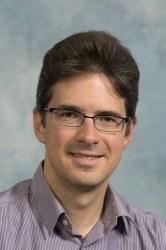Research
Our overarching goal is to gain a molecular understanding of how the cell recognizes cytosolic viral RNA and how it silences viral gene expression with the necessary sensitivity and specificity. We are applying a complementary set of biophysical, biochemical and cell biological approaches, with a focus on using high-resolution structural information to obtain detailed mechanistic insights with atomic-level detail.
Our key goals are to understand:
-how cells distinguish viral from endogenous nucleic acids
-how the immune response against double-stranded RNA is generated and amplified
-how cells recognize and silence integrated viral DNA
This will provide invaluable insights on fundamental principles of host-pathogen recognition, chromatin regulation and host-virus coevolution.
Publications
Qin Yu, Alba Herrero del Valle*, Rahul Singh* & Yorgo Modis. MDA5 autoimmune disease variant M854K prevents ATP-dependent structural discrimination of viral and cellular RNA. bioRxiv Preprint: DOI: 10.1101/2021.02.01.429133
Christopher H. Douse, Iva A. Tchasovnikarova, Richard T. Timms, Anna V. Protasio, Marta Seczynska, Anna Albecka, Daniil M. Prigozhin, Jane Wagstaff, James C. Williamson, Stefan M.V. Freund, Paul J. Lehner* & Yorgo Modis* (2020) TASOR is a pseudo-PARP that directs HUSH complex assembly and epigenetic transposon control. Nat. Commun., 11, 4940.
Daniil Prigozhin, Christopher H. Douse, Laura E. Farleigh, Anna Albecka, Iva A. Tchasovnikarova, Richard T. Timms, Shun Oda, Frank Adolf, Stefan M.V. Freund, Sarah Maslen, Paul J. Lehner & Yorgo Modis (2020) Periphilin self-association underpins epigenetic silencing by the HUSH complex. Nucleic Acids Res., 48, 10313-10328.
Guido Stoll & Shun-ichiro Oda, Zheng-Shan Chong, Minmin Yu, Stephen H McLaughlin & Yorgo Modis (2019). Structure of the tripartite motif of KAP1/TRIM28 identifies molecular interfaces required for transcriptional silencing of retrotransposons. Proc. Natl. Acad. Sci. USA, 116, 15042-15051.
Qin Yu, Kun Qu & Yorgo Modis (2018). CryoEM structures of MDA5-dsRNA filaments at different stages of ATP hydrolysis Mol. Cell, 72, 999-1012.
Christopher H. Douse, Yangci Liu, Stuart Bloor, Maria Shamin, Iva A. Tchasovnikarova, Richard T. Timms, Paul J. Lehner & Yorgo Modis (2018). Neuropathic mutations in MORC2 perturb GHKL ATPase dimerization dynamics and epigenetic silencing by multiple structural mechanisms. Nat. Commun., 9, 651.
Michael K. Fenwick, Yue Li, Stephen Almo, Peter Cresswell*, Yorgo Modis* & Steven E. Ealick* (2017). Structural studies of viperin, an antiviral radical SAM enzyme. Proc. Natl. Acad. Sci. U.S.A., 114, 6806.
Iva A. Tchasovnikarova, Richard T. Timms, Christopher H. Douse, Rhys C. Roberts, Gordon Dougan, Robert E. Kingston, Yorgo Modis & Paul J. Lehner (2017). Hyper-activation of HUSH complex function by Charcot-Marie-Tooth disease mutation in MORC2. Nat. Genet., 9, 1035.
For a complete list of publications, see: http://www.ncbi.nlm.nih.gov/pubmed/?term=modis%20y
Teaching and Supervisions
2015-present: Part II Pathology (Virology)
Other Professional Activities
Public Involvement/Engagement
Contributed artwork and scientific advice for an online BBC News Extra article by John Sudworth (James Percy, online producer), 15th July 2020
https://www.bbc.co.uk/news/extra/ewsu2giezk/city-of-silence-china-wuhan
Contributed to a blog article entitled “Coronavirus: How the Virus Works” by Roger Highfield, Science Director at the Science Museum Group, 22nd May 2020
Seminar for Non-Scientific Staff, MRC-LMB, 27th November 2019 www.youtube.com/watch?v=zzGJNl6ZTIk&feature=youtu.be



